2SLGBTQ+ and Social Media – Newsletter Feature
2SLGBTQ+ and Social Media – Newsletter Feature
November 9, 2021
by Karina Wright (she/her)
2SLGBTQ+ and Social Media:
Finding and Creating Online Communities

Photo by Tracy Le Blanc from Pexels
Many online platforms provide space for vulnerable communities, including 2SLGBTQ+ individuals. However, not all spaces are equal and not all are safe. As technology has evolved over time, so have online communities. In this article, we look at where 2SLGBTQ+ people have found and shaped online communities over the years.
Early Online Communities
In the burgeoning internet of the ’90s, many people were looking for a sense of community and belonging. At the time, popular ways to engage online included bulletin boards, newsgroups, forums and early blogging platforms like LiveJournal.
While not all platforms promoted a specific community for 2SLGBTQ+ identifying folks, many people embraced parallel communities in which they could explore different narratives of the 2SLGBTQ+ experience. For example, the fan-fiction community on LiveJournal had many 2SLGBTQ+ members. One study, “Coming Out Okay”: Community Narratives for LGBTQ Identity Recovery Work, specifically found that fandom commonly provides positive space for 2SLGBTQ+ folks, where many participants seek support from each other, even though this is not the primary function of the community. Fandom was found to help provide safety, acting as a space where people could process identities and construct new narratives about 2SLGBTQ+ people through creative works.
Introduction of Social Media
With developments in technology over the years, expressions of gender and sexuality are no longer limited to offline interactions. One important medium through which identity is expressed is social media. In the early 2000s, the forums of old gave way to social media platforms, including the ubiquitous Facebook, in addition to Twitter and Tumblr.
While Facebook was positioned as the platform to find old classmates, Tumblr quickly became a vibrant centre for queer discourse, with one article, Tumbling Into Queer Utopias and Vortexes: Experiences of LGBTQ Social Media Users on Tumblr, labeling it as a “queer utopia” and declaring it to be a space where “queer potential flourishes and expansive ways to think about the future materialize”. 2SLGBTQ+ people used social media like Tumblr to locate online communities, create new friendships and access information not available offline. While the online world provided space for communities, many 2SLGBTQ+ folks did not have access to this sort of community “in real life” and online spaces like Tumblr were filling this void.
While interviewing 2SLGBTQ+ youth, the author of the management of LGBTQ+ identities on social media, found that social media often facilitates safe spaces for identity formation and exploration. However, unsurprisingly, this does not negate the fact that social media spaces can also be hostile towards 2SLGBTQ+ people: not all platforms are equal! 2SLGBTQ+ online identities are multiple, situated and bound to specific platforms. It was found that on Facebook specifically, people were less likely to feel comfortable ‘performing’ (or exposing) their authentic selves. Two main social media spaces were identified as “safe”: Twitter and Tumblr. Tumblr emerged as a space known for being safe to explore gender and sexuality with one participant stating, “Tumblr definitely knew I was gay long before my parents did. It was the first place that I was openly myself”.
Finding the Right Online Community
Today, people have access to a much greater variety of online communities and social media platforms that can help them manage their online identities. For 2SLGBTQ+ people living in hostile spaces, online communities offer a place to recover, explore identity and contribute to community resources. Simultaneously, online communities can also be sources of support, particularly for finding and connecting with others going through similar experiences. However, this kind of work is complicated on certain social media platforms where family and friends are present (i.e.: Facebook), introducing additional safety risks related to disclosing personal information.
Interviewees of the research article mentioned above felt they were more able to tailor their audiences on Twitter and Tumblr, compared with Facebook and offline, with one individual stating, “I feel like my online space is more curated than real life”. People have the ability to become an idealized version of themselves, sharing as much or as little as they want. Some participants of the study described Twitter and Tumblr as being ‘less personal’ because they were less likely to engage with home contacts and peers on these platforms. It was also found that platforms like Tumblr and Twitter facilitated more diverse scripts of gender and sexuality by allowing users to tailor their audiences and distance themselves from home contacts.
Most social media platforms are mediated by algorithms that are deeply embedded into how we interact with both the world and these platforms. Whether someone is totally anonymous or publicly presenting as their authentic self on social media, algorithms create a relationship between an individual and the content that they relate to most closely.
TikTok, for example, has been gaining popularity recently and is reportedly used by over half of young adults in the USA, according to the research article, TikTok: an exploratory study of young adults’ uses and gratifications. Through the COVID-19 pandemic, TikTok use skyrocketed, with many young social media users embracing the platform as a new source of creativity, activism and authenticity. The content consists of short videos as short as a few seconds and up to three minutes long, any of which have the opportunity to become viral with the ‘right’ audiences. According to the master thesis, LGBTQ+ Content on TikTok and Everyday Activism, the accessibility of going viral makes TikTok unique and drives its users to produce frequent content and engage with other users.
Work Remains to Make Online Spaces Safe
Similar to other social media platforms, many minority groups have found their place and people on TikTok. Some 2SLGBTQ+ content creators on the platform try to use TikTok’s potential reach to spread awareness, de-stigmatize 2SLGBTQ+ people and educate others on sensitive or unknown topics surrounding gender and/or sexuality. Despite this, the platform recently received criticism stating that it was suppressing the identities of its growing 2SLGBTQ+ population. One research article, For You, or For”You”?: Everyday LGBTQ+ Encounters with TikTok, conducted interviews with 16 different TikTok users to explore people’s engagement and found that “TikTok’s For You Page algorithm constructs contradictory identity spaces that [both] support LGBTQ+ identity work and reaffirm LGBTQ+ identity, while also transgressing and violating the identities of individual users.”
As algorithms become more sophisticated and new generations become more open about their online identities, older social media platforms like Facebook that reduce personal curation are becoming more and more outdated. The advent of newer platforms that deliver content directly inline with a user’s specific interests and/or identity is becoming more commonplace, allowing younger 2SLGBTQ+ individuals to find community easier than ever before.
As the 2SLGBTQ+ community has traversed the internet through the early days of newsgroups, the golden years of Tumblr, the introduction of social media, and finally, the current climate of TikTok, it’s clear that the evolution of online representation is not complete. It will be interesting to see how algorithms further evolve and whether the current transgressions of some platforms will pivot to more fully embrace the 2SLGBTQ+ community.
References:
– For You, or For”You”?: Everyday LGBTQ+ Encounters with TikTok
– TikTok: an exploratory study of young adults’ uses and gratifications
– LGBTQ+ Content on TikTok and Everyday Activism
– Queer identity online: Informal learning and teaching experiences of LGBTQ individuals on social media
– Tumbling Into Queer Utopias and Vortexes: Experiences of LGBTQ Social Media Users on Tumblr
– The management of LGBTQ+ identities on social media: A student perspective
– Coming Out Okay: Community Narratives for LGBTQ Identity Recovery Work


